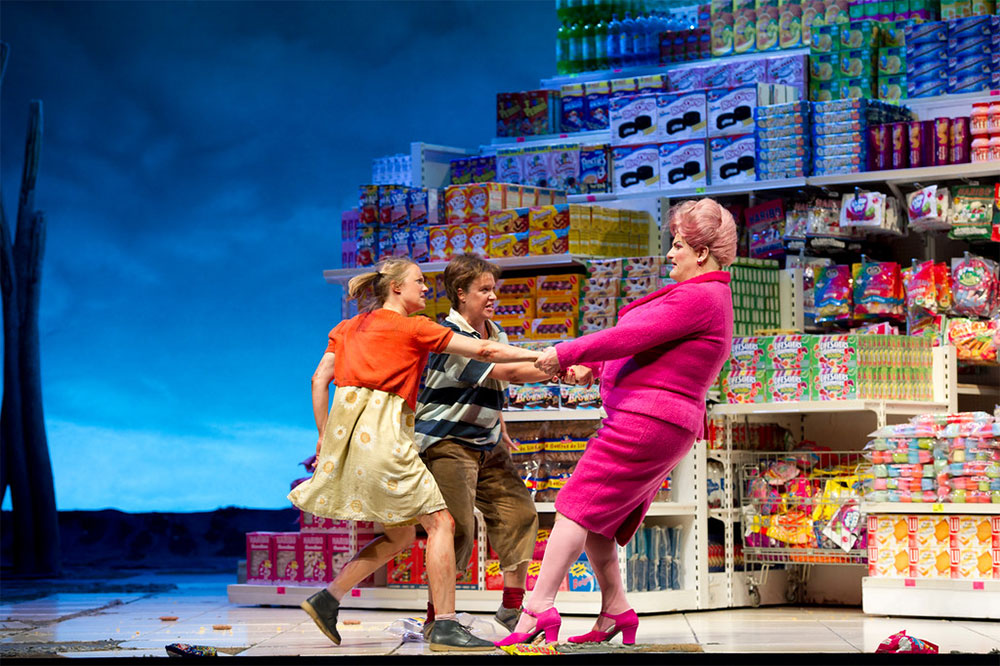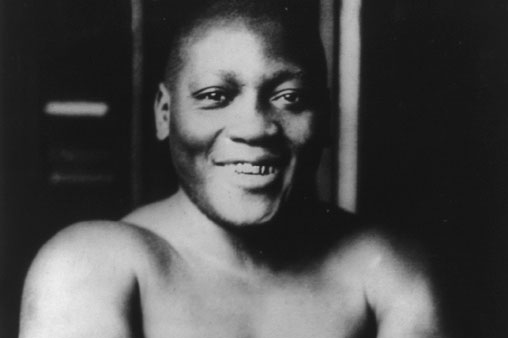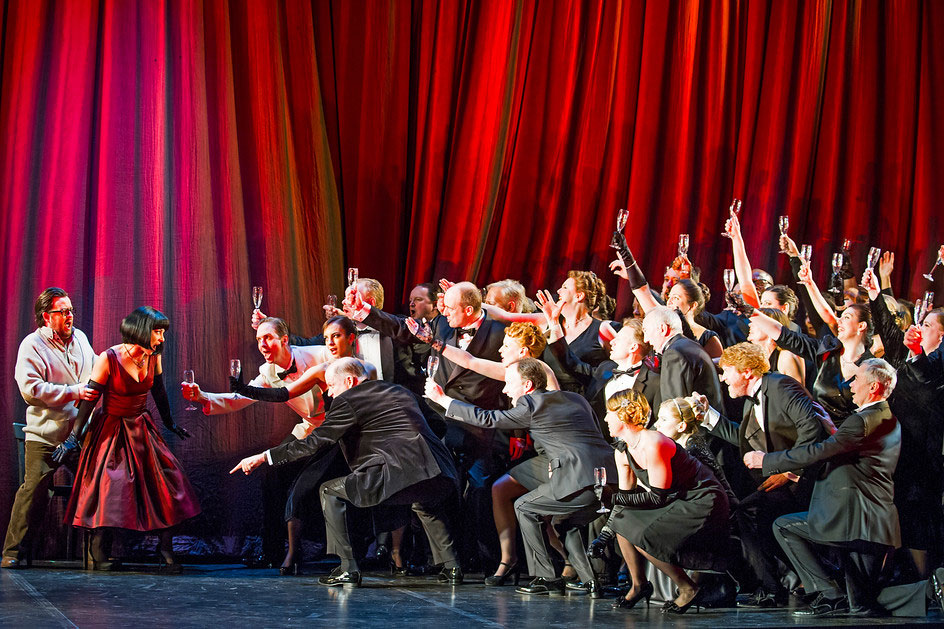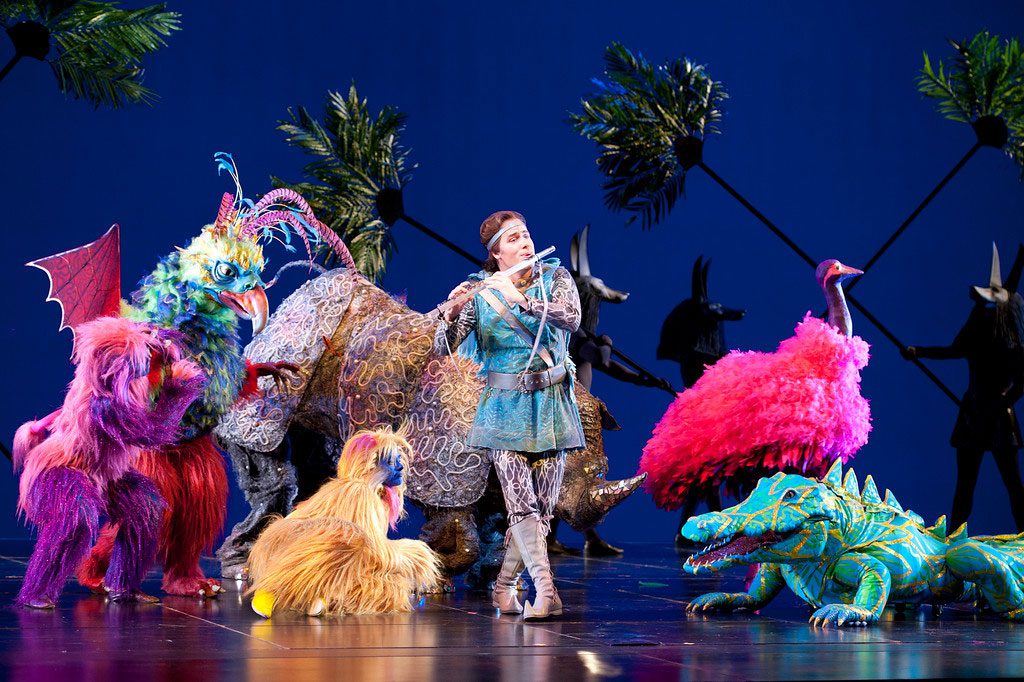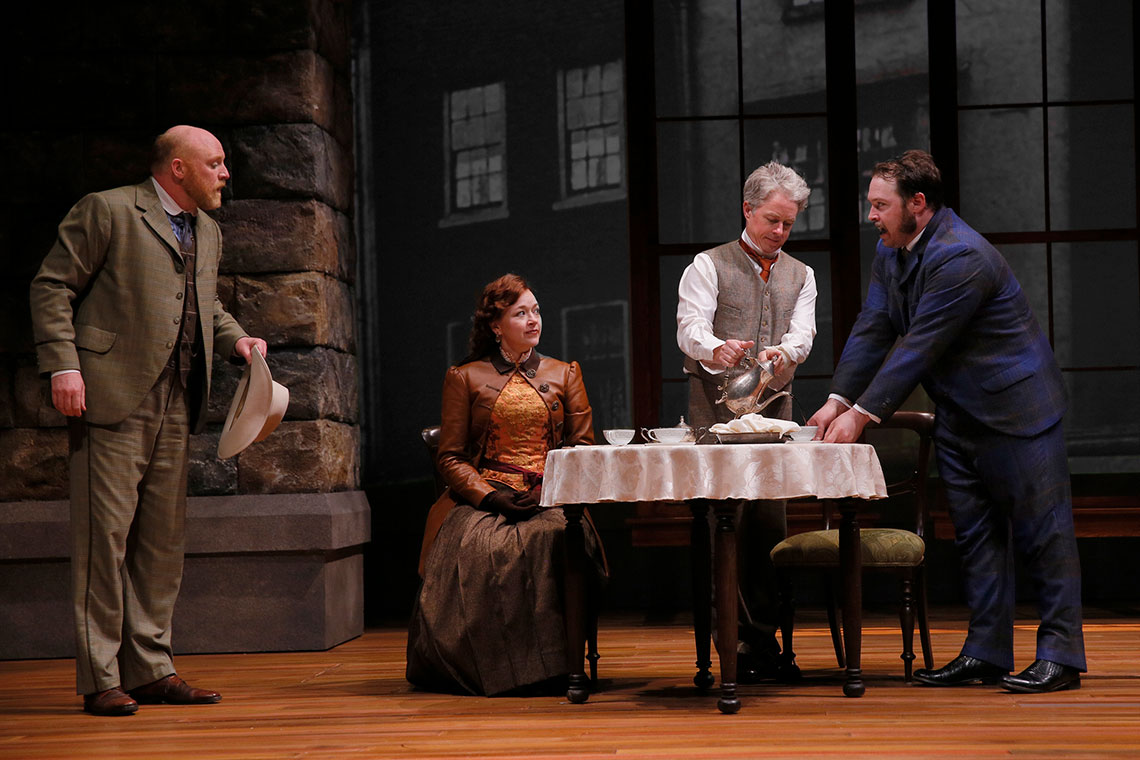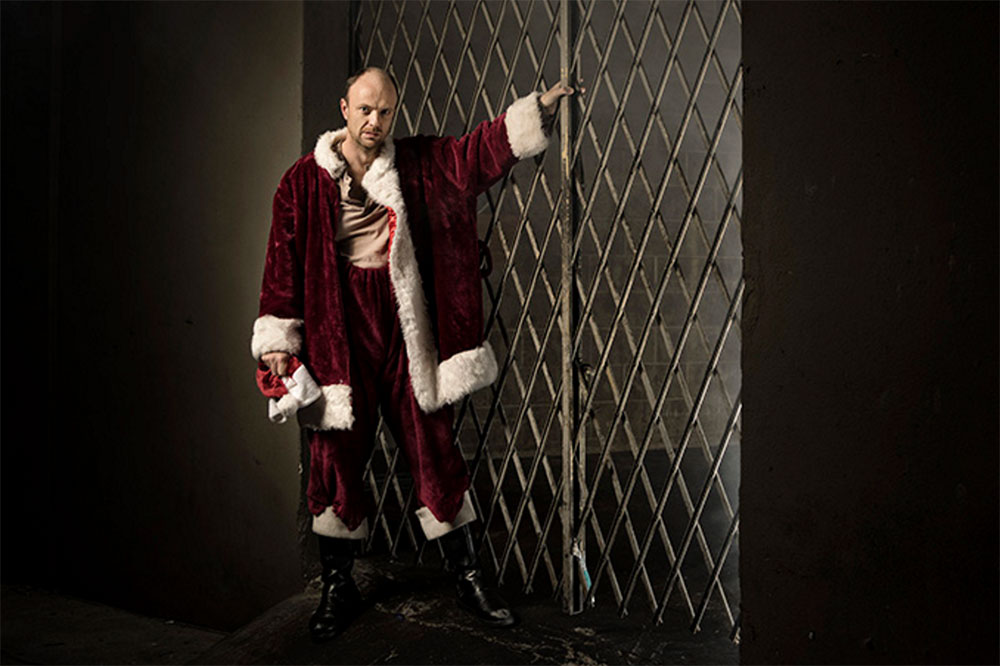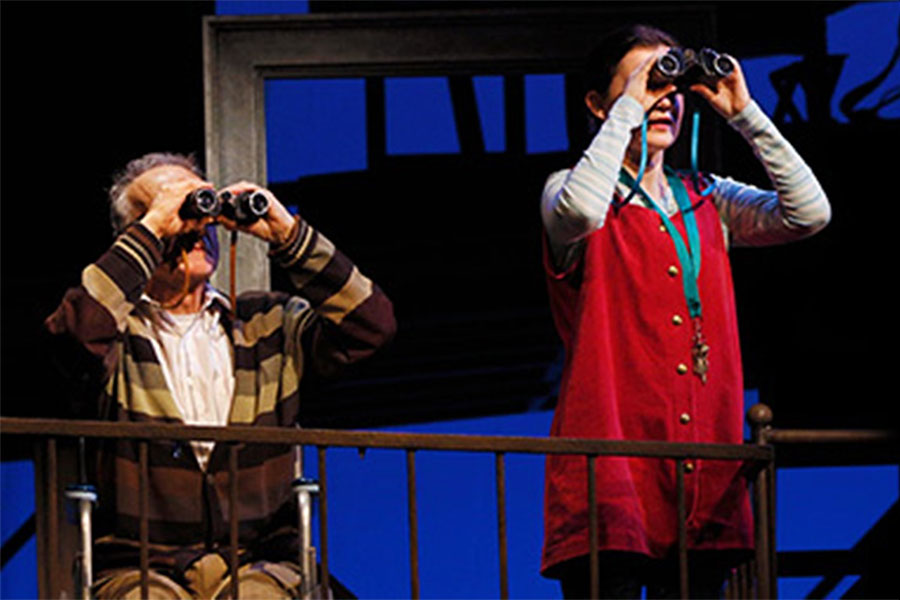Once you develop a taste for opera, each new show becomes exciting in its own way. The Seattle Opera has an uncanny knack for putting together satisfyingly diverse seasons. “One of the ideas is to make sure season subscribers don’t get too much of the same thing,” explains Jonathan Dean, the Opera’s in-house dramaturge.“There’s a lot of different operas we could choose from—four centuries of opera history in a bajillion different countries, so to give them a good smattering within only a five opera season is a fun challenge.”
I sat down with Dean in a coffee house in South Lake Union to pick his brain about the upcoming shows. I tried my best to cut this down to a reasonable length but it’s not easy, as Dean knows pretty much everything about opera’s past, present and future (well, maybe not future) and pretty much everything he says is fascinating to a newly-minted opera enthusiast like myself. To avoid this article becoming an e-book, I weeded out the best stuff, trying to stick to three factoids per show. These are the reasons I absolutely cannot wait for August.
The Wicked Adventures of Count Ory
(Gioachino Rossini. August 6–20)
It’s the first time the show has been done by Seattle Opera.
“[Ory has] never even been done in Seattle, as far as I know. It’s not an opera that gets done a huge amount in the US. Many will be watching it for the very first time.”
It’s Looney Tunes.
Rossini is most famous for composing The Barber of Seville, which itself is famous because of the classic Bugs Bunny short “Rabbit of Seville.” If you think the animated treatment is a misappropriation of the source material, you’d be wrong. “’Rabbit of Seville’ is a great production of Barber of Seville,” says Dean. “It’s exactly what every stage production tries to be, though it’s hard for a live action opera to be as nuts as Chuck Jones.” Ory is in the same manic Rossini tradition.
It’s also Pythonesque.
For this brand-new production, director Lindy Hume and designer Dan Potra had a very specific inspiration: “Their idea was, ‘Let’s do this à la Monty Python and the Holy Grail,’” Dean explains, “1970’s medieval, where the knights look like glam rockers—kind of campily historical. Certainly it has nothing to do with any actual history on planet earth at all.”
If you’re like two-years-ago me and you generally associate operas with tragedy and seriousness, trust me: they can be genuine gut busters. During last season’s Marriage of Figaro the entire row behind me was absolutely coming unglued. And Count Ory might be the funniest yet. “Rossini’s music is kind of like a laugh track before there were laugh tracks,” says Dean. “There’s a lightness to it that almost subliminally makes you want to smile.”
Hansel and Gretel
(Engelbert Humperdinck. Oct 15–30)
It’s not that Engelbert Humperdinck.
I’ll be honest with you. When I first saw the name of the composer of this opera, I thought for a few moments that the once-famous 1960s and ’70s British pop singer also had a side career as an opera composer. This both intrigued and worried me, as I am not exactly a fan of the crooner’s work. Fortunately, there was also an opera composer (and Wagner acolyte) who went by the same name, and he did it nearly 100 years earlier. As Dean puts it, “As far as I know, that guy got his name from this guy. Mostly because he thought it was a great name.”
It was a VERY influential opera.
“My personal theory,” says Dean, “is that Walt Disney had this in mind completely when he made Snow White.” Hansel and Gretel wasn’t one of those masterpieces that bombed originally and gradually gained respect. It was a smash hit right out of the gate when it premiered in Germany in 1893 and eventually became a Christmastime family tradition (think The Nutcracker). It was particularly ubiquitous in the 1920s and ’30s, when Disney was working on his own signature hit. Many of the stylistic choices Disney made were similar to the Depression-era productions of the Humperdinck opera. “This is the link between the 19th century use of Grimm’s fairy tales and Disney,” Dean explains. “Which eventually leads us to Frozen.”
This production is extremely unique.
While the original Hansel hewed fairly close to the disturbing breadcrumbs and child abandonment story you heard so often when you were a kid, SO’s show comes at the material from a contemporary angle. Hansel, Gretel, and their parents live in a cardboard box below an overpass.Instead of a gingerbread house, much of the action takes place in a bright, corporate grocery store. Instead of a witch, the antagonist is a demented cashier, played by a character tenor. There’s also a mezzo-soprano in a trouser role as Hansel, demonstrating opera’s charming and practical approximation of gender fluidity. And that’s to say nothing of the eye-popping sets. This is probably the opera that I’m most excited to see. But then again…
La Traviata
(Giuseppe Verdi. January 14–28)
This is like the Casablanca of operas.
By which I mean it’s really popular. I wish I had a better contemporary movie to compare it to, but Star Wars isn’t quite appropriate for a tragic romance. And I don’t like Titanic, so that’s off the table. Dean tells me that it’s “probably one of the top five” most-performed operas in the world, which is pretty impressive considering people have been making operas since Shakespeare was still alive. I’ve been listening to La Traviata a lot lately, and trust me: you’ve heard much of it before. It’s like Carmen and Barber of Seville: a single source for a surprisingly large amount of the world’s famous classical music.
It blew people’s minds when it premiered. And not in a good way.
You remember a little while back how we discussed masterpieces that bombed originally? La Traviata is one of the most famous examples of this. “People were not ready for it,” says Dean. Verdi presents a “fallen woman”—that’s what Traviata means—a high class prostitute, in a sympathetic manner that audiences would not have approved of in 19th century Europe, despite the fact that most of the upper class men likely had paid mistresses. “At the time there were a lot of people who were really uncomfortable with being asked to consider her as good a person as anybody else, because that was how that society was structured.” Essentially, audiences got all huffy about it because it held up a mirror. “They were expecting a medieval chivalry thing or a bible story or an old myth. And they got this contemporary thing about their own hypocritical mores.”
Many elements of La Traviata might seem oddly familiar…
I’m not going to play coy: this is almost the same plot as Pretty Woman, though my suspicion is that Verdi did it first. I haven’t seen Pretty Woman in a long time and I plan to keep it that way, but Dean assures me that there are plenty of nods within the film to its classical inspiration. Richard Gere even takes Julia Roberts to see La Traviata at one point. They’re pretty blatant about it.
But the show might be familiar to people for more reasons than popular culture. “I doubt you’d haveto look very far today to find the kind of environment where these old-fashioned double standards still play,” says Dean. “I’m kind of hoping that the production is just enough to go for our own jugulars.”
Katya Kabanova
(Leoš Janáček. February 25–11)
It’s not often you get to see an opera in Czech.
It’s exceedingly rare that you’ll see a Czech opera, period. The last time Seattle Opera did one was Dvořák’s Rusalka (aka The Little Mermaid), which was performed in 2001. As we all well know, the primary languages opera singers are trained in are French, German and Italian, so often singers have to do a little extra training to get the words right. “And even then, if you bring your Czech friends to hear it, they can be like ‘Oh, come on.’ It’s difficult to get it to sound exactly right unless it’s your mother tongue.”
Janáček is like the edgy indie band of opera.
He’s definitely not the most famous composer around, but those who actually know their opera swear by him. For example: “My boss, Aidan, thinks that Janáček’s operas are the best choices for today’s first-time opera-goers,” says Dean. And I figure Aidan Lang probably knows a thing or two about the subject.
GO SEE IT! You might not get another chance for a while.
Opera companies don’t get many opportunities to perform the lesser-known pieces that just might win your heart. And while Janáček can be challenging, he can also be very rewarding. “The first time I saw it, it kind of changed my world around a bit,” says Dean. “It’s one of those things that you have to hunt out, but the taste for it is not hard to acquire.” Agreed. I’ve listened to the snippets provided on the Opera’s Soundcloud account (HIGHLY RECOMMENDED, by the way), and I’m already hooked.
Magic Flute
(Some guy named Mozart. May 6–20)
Jonathan Dean clearly knows how to speak my language.
Here are three things that he said when talking about Seattle Opera’s take on this Mozart classic:
“They wanted it to be kind of like an Indiana Jones adventure.”
“It’s essentially a Miyazaki movie.”
“[Papageno] is basically Han Solo.”
And I have to wait nearly a year to see this thing? Not fair, Dean. Not fair at all.
This actually is the Star Wars of operas.
The comparison works perfectly here, and not just because Dean made that Han Solo reference. The Magic Flute was a colossal hit “from day one.” It’s a fun, flashy, easily relatable adventure with music that everyone can enjoy. It’s like a modern day box office blockbuster, but one of the good ones—The Avengers rather than Transformers 2. It’s one of the reasons that Mozart is still known as, well, Mozart today.
Here’s some more stuff that makes me really excited.
“We want this to be a fun fantasy/adventure kind of story. [The designers] do this whole map thing where they project it on the stage and you see the line that traces their journey, like in Indiana Jones. They use a lot of lasers and there are all kinds of weird glowing triangles and smoke and stuff like that. We created this production of Magic Flute in 2011 and it was kind of pushing the edge of technology at the time. I wouldn’t be surprised if in the revival they use even more computers and projections.”
If that particular combination of words doesn’t get you really excited, then you and I are very different people.
